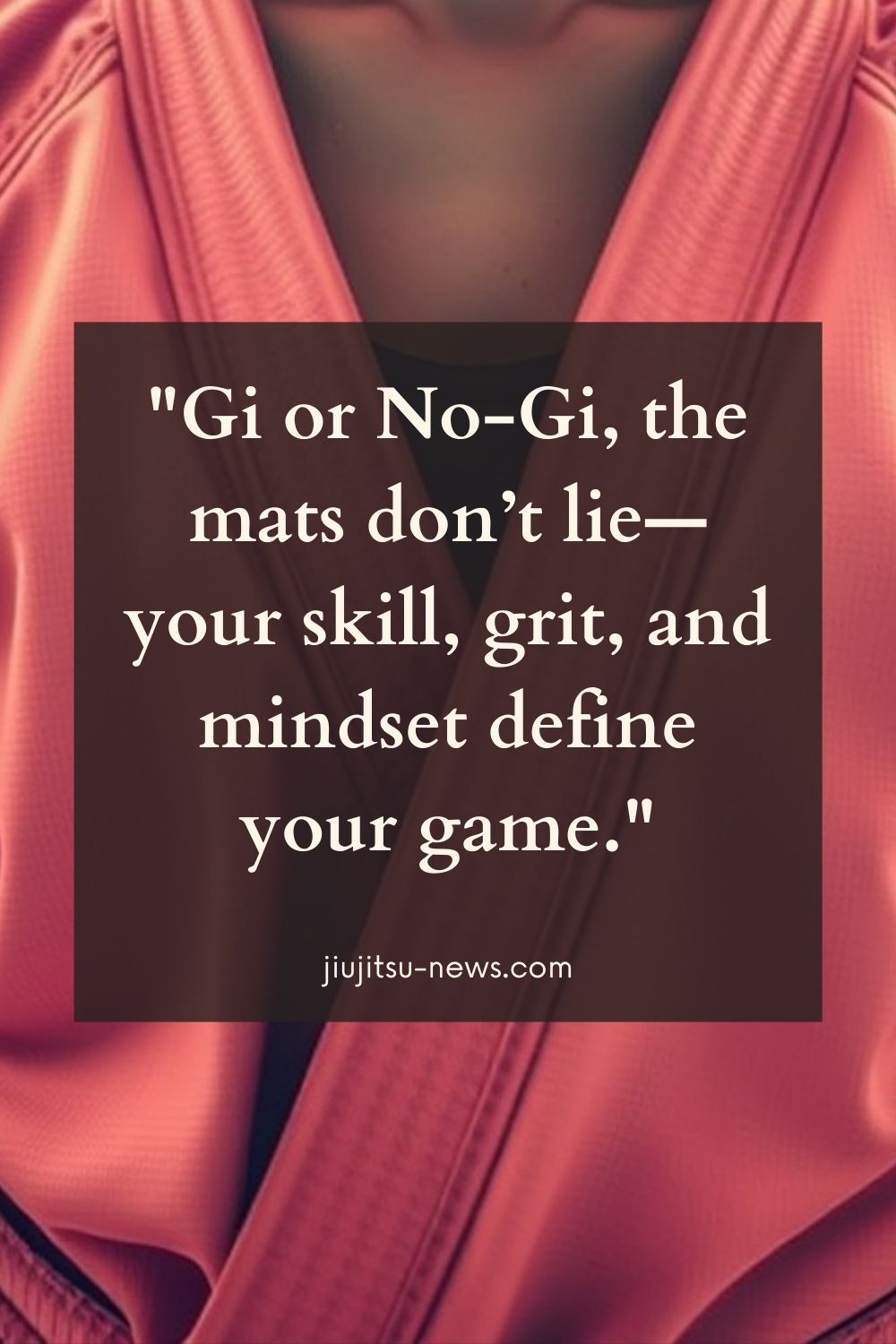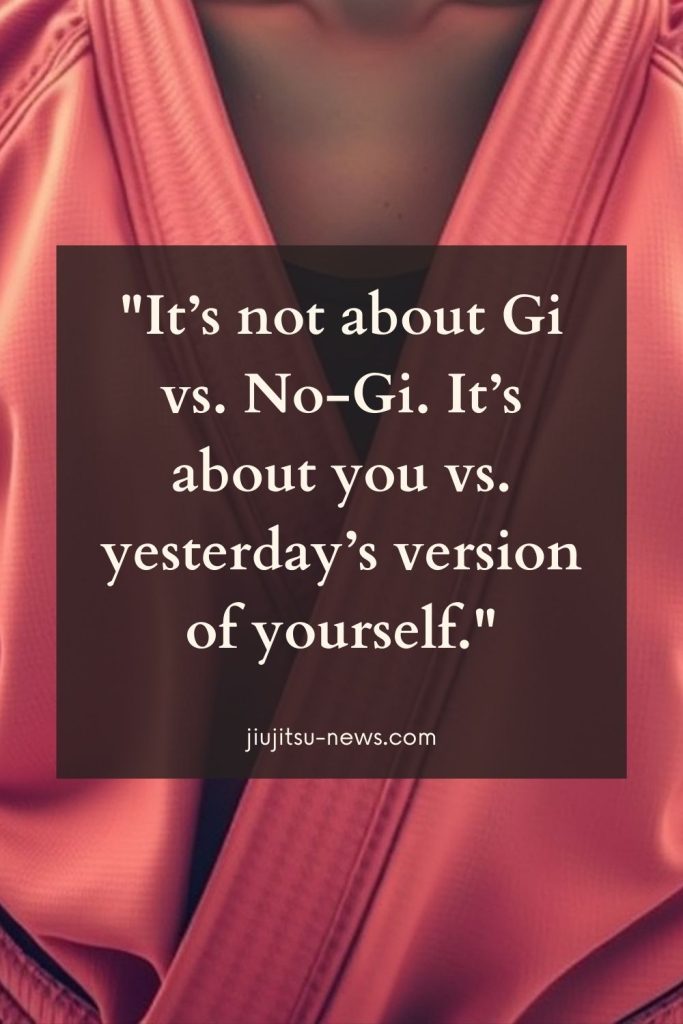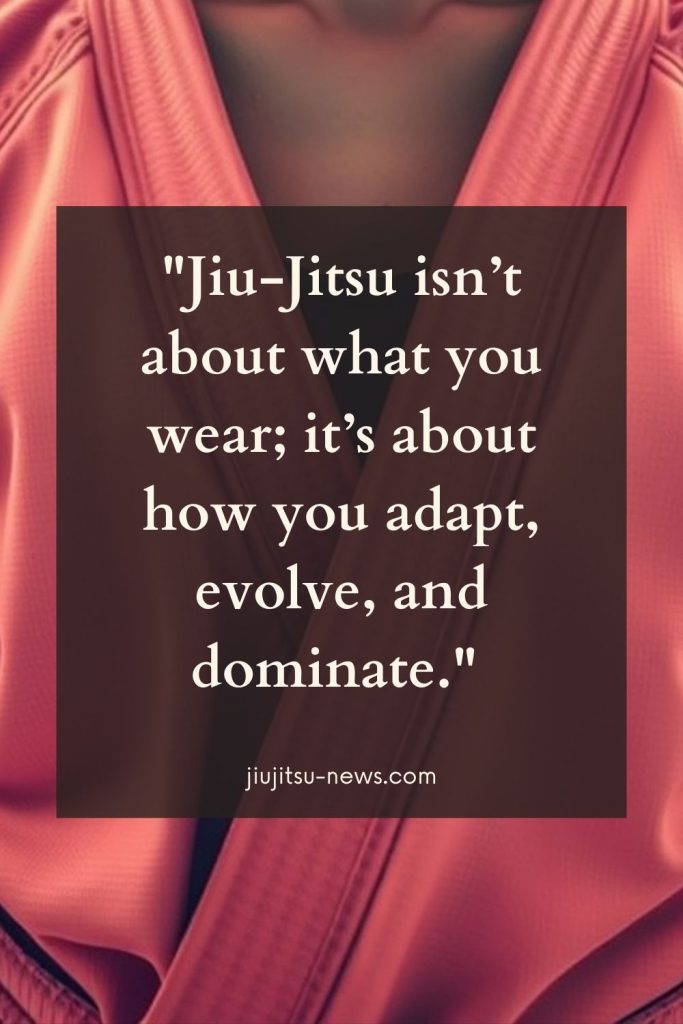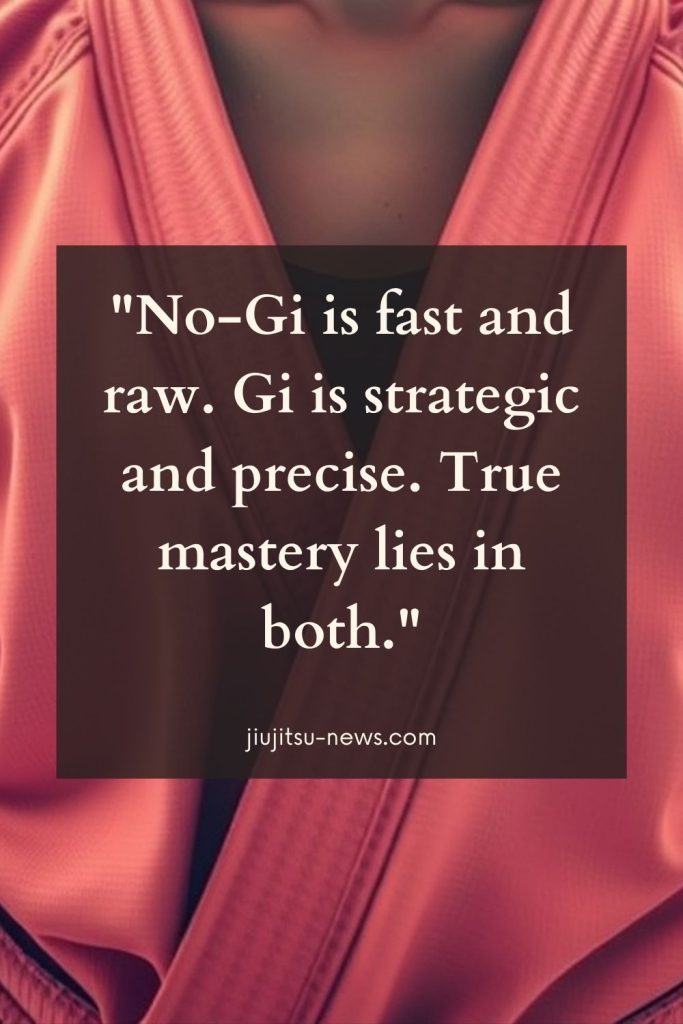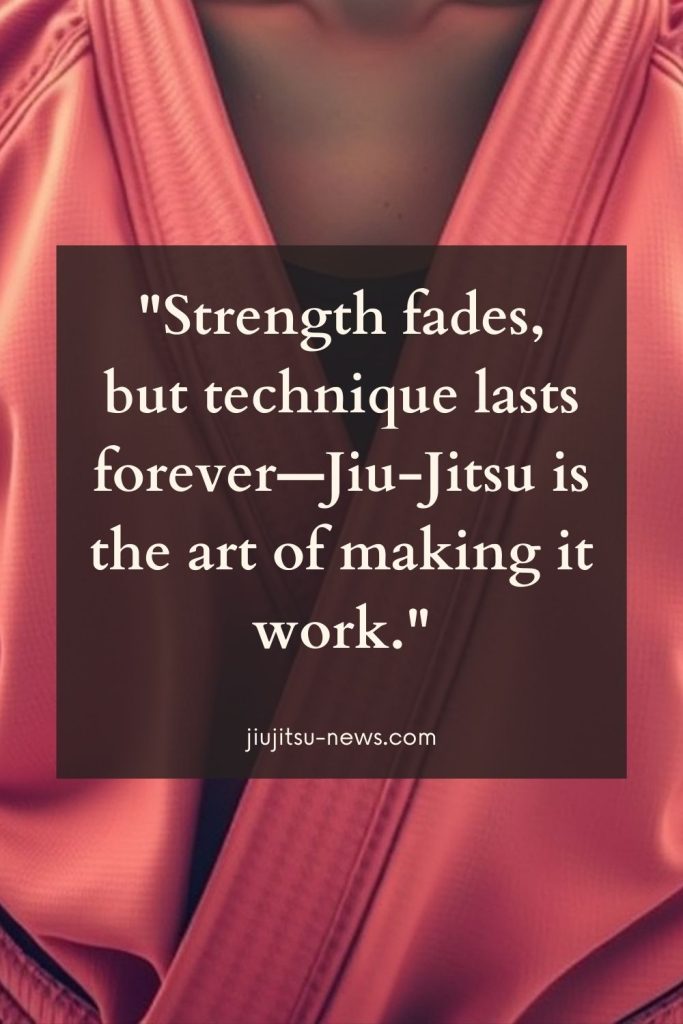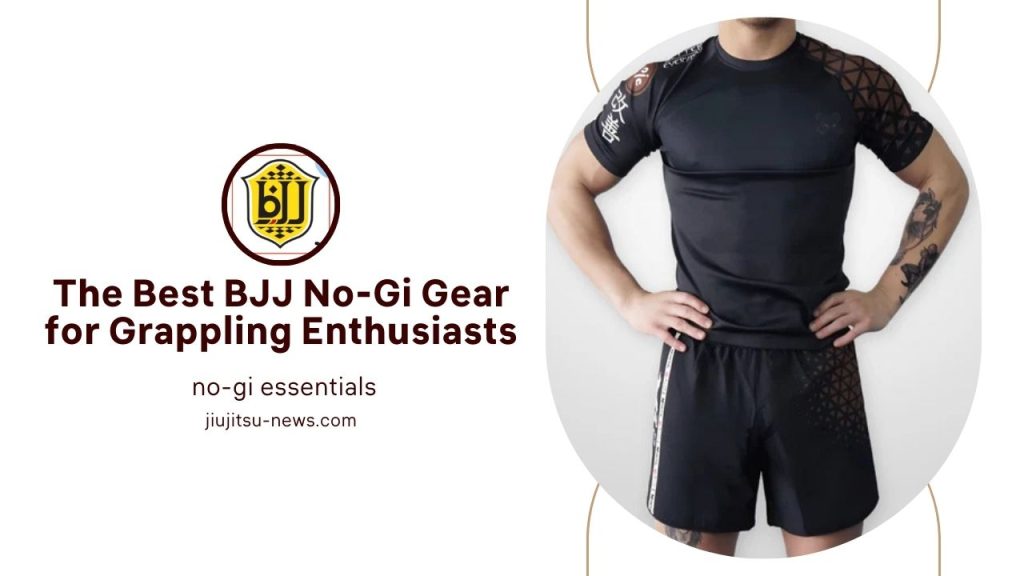There are two grappling options in Brazilian jiu-jitsu – gi and no-gi. BJJ diehard addicts know how hard this debate can be. So, what is the difference between jiu-jitsu gi and no-gi?
Many practitioners believe that no-gi fighting works better in mixed martial arts. On the other hand, gi fighting might help you defend yourself in a one-on-one situation against a bully. So we are in the role of myth busters!
This article will analyze the different aspects of both BJJ styles. You’ll learn the main differences between Brazilian jiu-jitsu Gi vs No-Gi. Stay tuned!
Gi vs. No Gi Jiu Jitsu: What Is the Difference?
There are many BJJ competitions and federations all around the globe. In the most significant number of cases, you will fight in a traditional gi in the tournament.
But sometimes rash guards and shorts (spats) are mandatory tournament equipment.
Here are the greatest differences between these gi and no-gi fighting styles:
- Clothing – gi competitions demand wearing a traditional gi with a belt, while you’ll mostly wear rash guard, shorts, and sometimes spats in a no-gi tournament;
- Grabbing the opponent’s clothes – you mustn’t grab your foe’s clothes or use the parts of his gi, shorts, or rash guard to finish the no-gi fight successfully. In a gi matchup, rules allow holding the opponent’s gi, you can end the bout via lapel or collar choke.
- Gi competitions offer a more significant number of submissions, but no-gi BJJ is way more applicable in mixed martial arts.
- The philosophy of fighting – no-gi sweeps and transitions are way faster as you don’t have many ways to stall while rolling.
- Breaking grips – in no-gi, strength is way more important than technique. You can use lapel/collar tricks against a stronger opponent in a gi battle.
- Speed and quickness are way more critical in a no-gi bout. The skillful opponent can use your piece of clothes against you in gi combat.
- Submission switches – way quicker in the no-gi bout, but you have much more options in gi combat;
- Individual rule differences – for example, IBJJF Gi competitions ban heel hooks, while ADCC allows this dangerous leg lock. Please read the tournament invitation letter carefully, they must write the list of legal and illegal maneuvers. Some techniques might be allowed for brown and black belts only.
Which Is Better, Gi Vs No-Gi Jiu-Jitsu?

It depends on your personal preferences. If you’re looking for better self-defense disciplines, no-gi works better.
However, since the Gi is similar to a jacket, there are many downsides of gi combat for a street battle unless you live in Russia or Alaska.
Do you plan to become the best competitor and earn tons of medals in a sports discipline with a strict ruleset? Gi BJJ is a better choice for you. Would you like to transition to MMA and boost your overall fighting skills? If you answer with “yes,” give no-gi a shot.
Is Gi Harder Than No-Gi BJJ?

No-gi can be hard to master because you need a decent amount of strength. For example, you’ll hardly finish the opponent with a Kimura or a triangle choke when he’s twice stronger than you.
Indeed, no-gi submission switches are harder to perform as you can’t get a hold of the opponent’s gi, lapel, or collar. It is also way harder to make a sweep or transition because of the slippery foe.
Oh, one more thing – no-gi combat demands way more stamina than a gi fight. Why?
In gi combat, you can, for example, grab your opponent’s collar, trap him into a full guard and recharge your batteries when you’re gassed.
But, In a no-gi fight, the ref sanctions any contact with your opponent’s clothes. It is much harder to control him, despite fewer sweep/transition options.
No-Gi VS Gi BJJ Which is Better for MMA?
No-gi is way more realistic for MMA combat. The cotton kimono style was excellent for the early stages of the UFC (Royce Gracie was fighting in a gi, which gave him a significant advantage over the other opponents).
Yet, MMA evolved, and fighting in a gi was prohibited during the era of PRIDE FC.
Judo fighters Kazuhiro Nakamura and Hidehiko Yoshida were some of the last names who entered the ring in a traditional gi.
Modern MMA rules strictly prohibit grabbing or holding your opponent’s shorts.
You can forget lapel and collar chokes because professional MMA fighters mustn’t wear a t-shirt or a jacket (it is allowed in some amateur MMA bouts, though).
Almost every single no-gi technique will work in modern MMA. There is only one difference—MMA fighters mostly don’t wear spats (some federations allow them, though).
You might have a hard time setting up a successful leg lock, and it’s tough to get a good grip on a sweaty opponent.
Gi Vs. No-Gi, Which Is Better for Jiu-Jitsu Beginners?
No-gi BJJ may be harder to learn because the game moves faster. You’ll get a good grip when your opponent wears a much more straightforward traditional gi.
Indeed, in Gi training, you can catch his lapel or collar, too, plus you don’t have to press his back or waist hard with your chest to stay on the top. There is a chance of winning the fight via good technique.
On the other hand, when the difficulty level of the gi and no-gi techniques is even, you’ll perform a no-gi move much harder. Why?
The answer is simple: the opponent’s clothes are your greatest ally in the fight! Look at MMA bouts; staying on top of the sweaty opponent is hard. He’s going to get up as soon as you raise your hips!
Gi Vs NoGi BJJ, Which Is Good for Self-Defense?

No-gi moves are realistic for self-defense. Spats are similar to pants or jeans; people often wear shorts and t-shirts.
On the other hand, Gi fighting might not be the most excellent choice for self-defense.
First, your opponents will rarely wear a jacket or a long-sleeve t-shirt. You’ll hardly perform lapel or collar chokes as your opponent doesn’t wear a gi. You will be limited to takedowns and some submissions in a street fight.
, you’ll need more power and excellent technique to stop the bully, but self-defense rarely lasts longer than 5-7 seconds. You can quickly win via clinch chokes, tricky submissions, or ground skills.
Gi or No-Gi Grappling, Which Is More Realistic for Street Fights?
The no-gi skills will work well in a 1-on-1 street fight, but there are two big downsides—dealing with multiple opponents and a stand-up fight. Also, you’ll hardly perform a clinch submission on the concrete, and you could hurt yourself badly.
When your enemy starts weathering the storm, you must intercept him with a GSP-style counter takedown and drag the bout to the ground.
It is not easy to duck under a quick enemy. Yet, street bullies are usually the slow masters of one or two powerful strikes.
Source: Hacking MMA
No-gi fighters will have greater chances against very confident bullies. Bigger attackers mostly grab you and try to finish the bout on the ground because, according to their philosophy, size matters.
They believe the bigger guy will easily win the bout. But they should not underestimate the power of BJJ on the ground!
Should I Train Both Gi and No-Gi?
Yeah, you should give both fighting styles a shot. There are so many reasons to try both gi and no-gi out:
- No-gi training turns you into a pressure king—you can’t get a hold of the opponent’s gi when you’re trying to control him in a no-gi fight. Isometric strength matters a lot, which positively affects your gi game.
- Better reflexes – you have many ways to stall in a gi fight. But in a no-gi bout, one wrong position leads to a sweep or transition. You can lose the dominant position quickly unless you react in a split second.
- Stronger grips – gi workouts improve the power of your grips, which translates to better grip strength in your no-gi game.
- Better escapes – friction makes slipping out of the wrong position in a gi match harder.
- More profound knowledge of the game and better self-defense.
- No-gi bouts will improve your takedown offense. Gi bouts start on the feet, so you might end up on top of your foe instead of pulling guard and working off your back.
Should I Focus on Gi or No-Gi BJJ Competitions?
It depends on your goals. Fighters who plan to become the best should pick one style and stick to it because of rule differences.
For example, a super-skillful might make rookie mistakes in a no-gi bout because of different grips. It is harder to get a hold of the sweaty opponent.
However, Fighters who plan to transition to MMA or gain a more profound knowledge of BJJ should try both styles. You should also experiment in the early stages of your career.
There are also differences between federations. For example, IBJJF rules ban heel hooks, but these leg locks are legal in ADCC.
Professionals dedicate their lives to a specific ruleset. Just answer the question, “which is my final BJJ goal,” and you’ll discover which style works better for you.
Is There a Belt System in No-Gi and Gi Jiu Jitsu?
There are many no-gi BJJ schools all around the globe. These dojos, when run by a Brazilian jiu-jitsu black belt, do have their belt ranking system, which depends on numerous factors:
- Skillset progress;
- Time spent in the gym (training);
- etc.
Besides, Gi Brazilian jiu-jitsu includes a variety of colored belts, ranging from white to red, with the red belt being the highest belt level in this martial art.
Final Thoughts
Brazilian jiu-jitsu gi and no-gi are incredible training styles that you should try. In no-gi, you wear a rashguard and shorts (spat). But in gi training, you wear a gi uniform (kimono jacket + pants).
In this article, we’ve discussed some facts about the gi and no-gi grappling styles. It is way harder to control your opponent in a no-gi match. Otherwise, in no-gi or gi combat, one mistake leads to many problems.
Here are other amazing facts to illustrate the debate gi vs. no-gi so far:
- No-gi fighters’ grips, takedown offense, and reflexes are better, but gi fighters are more skillful in escapes and changing positions.
- No-gi works better for self-defense.
- Several Brazilian jiu-jitsu schools award belts in BJJ styles (gi and no-gi).
- You should learn gi and no-gi if you plan to transition to MMA or get a deeper knowledge of the game.
- Gi fighting is more technical, but you need more strength and pressure to control your opponent in no-gi combat.
- Escape tactics are more difficult to execute in Gi jiu-jitsu because the Gi grips slow the game down and make it more technically challenging.
- Finishing a submission technique is more difficult in No-Gi since the grip holds are easily broken, and the game is played faster.
- Because of the popularity of mixed martial arts competitions, No-Gi jiu-jitsu got decent popularity. Nonetheless, Gi jiu-jitsu is also more popular as one of the most recognized martial arts.
Are you ready to explore the depths of MMA and Jiu-Jitsu? Get insider stories, fight breakdowns, and mindset gems delivered straight to your inbox. Subscribe Now!


